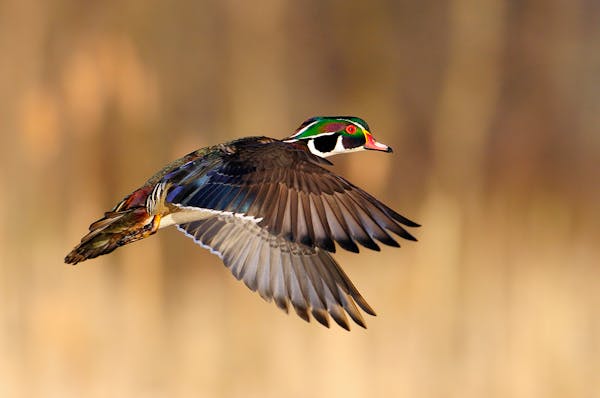Understanding the logic of Mille Lacs fisheries management grew more challenging still when the Department of Natural Resources announced recently a total night fishing ban on the big lake this summer and fall. Not only of walleye angling, but of bowfishing for carp — as if this sport could be confused with jigging or long-lining for walleyes — and also muskie fishing, with its 80-pound-test line and plugs and bucktails the length of a man's forearm.
The attempt by the DNR to reduce the big lake's walleye harvest by limiting access between 10 p.m. and 6 a.m. from May 12 to Dec. 1 is a best-shot effort to keep anglers from reaching this year's minimalist 42,900-pound quota prematurely.
Fishing is often productive at night, and by keeping anglers off the lake at that time, thereby slowing harvest, the hope is Mille Lacs walleye anglers can enjoy their sport throughout the coming year.
Among parties particularly aggrieved by the edict are the lake's launch owners, who often stay on Mille Lacs until well after dark, particularly in the hot-bite months of late May, June and early July. Their target is walleyes, and keeping the big boats docked, as well as the many nighttime bobber-fishing anglers who cast to rock piles after dark, might, in fact, yield the slow walleye harvest the DNR seeks.
Of course to sympathize with this approach one needs first to accept that anything to do with walleye management these days at Mille Lacs makes sense, starting with the DNR's failure to acknowledge that in effect, if not in fact, the big lake's walleye population has collapsed. Concerning as well is the DNR's seeming unwillingness to acknowledge that part of the lake's walleye management equation are the nets strung in its waters in spring by eight Chippewa bands. This failure to speak frankly about all elements at play at the lake — not just its zebra mussels and burgeoning smallmouth bass and northern pike populations, among other topics — has significantly undercut the agency's credibility.
Consider now the plight of muskie anglers and bowfishermen, significant segments of whom visit Mille Lacs each year. The former routinely fish at night, the latter exclusively. Both spend money around the lake, at gas stations, restaurants and motels — which everyone acknowledges the area sorely needs. Moreover, the actions of neither has anything whatsoever to do with Mille Lacs walleyes or the lake's walleye harvest.
Yet these anglers, too, are banned from fishing Mille Lacs between 10 p.m. and 6 a.m., in part because the DNR says enforcing a night ban exclusively against walleye anglers, and not all anglers, would be difficult.
"I can't tell you how much this upsets me,'' said muskie guide Josh Stevenson, owner of Blue Ribbon Bait in Oakdale. "Mille Lacs is unlike any lake in the state. It's big, it's wild, it's a challenge and I, like other muskie fishermen, fish it regularly at night, maybe four hours on, four hours off, depending on the moon phase.''
Added Stevenson: "Mille Lacs is a challenge like no other lake anywhere. If you know the lake and your timing is right, you have a chance to put a 50-incher in the boat. This might take days or weeks. But the fish are there, and they're often caught at night. To have that taken away from me just kills me. And for what? To reduce the walleye harvest?''
Curt Cich, president of the Land of Lakes Bowfishing Association, a state group, is similarly incredulous. Not only do bowfishermen shoot carp, an invasive species, thereby performing a public service, they do so in flat-bottom boats with generators running and high-beam lights glowing — hardly the profile of walleye anglers.
Cich has met with DNR fisheries and enforcement managers to plead his case but hasn't heard back.
"I can't understand any reason why we should be kept off the lake,'' Cich said. "We have nothing to do with walleye fishing, and in no way could we ever be confused with walleye fishermen.''
In a phone interview Thursday, DNR fisheries chief Don Pereira was sympathetic but asked anglers of all stripes to see the big picture. Rebuilding the lake's walleyes will be challenging, he said. And keeping Mille Lacs walleye fishing open throughout the year is important for anglers and the region's economy.
Fair enough.
But might pressure from bowfishermen and muskie anglers change the DNR's mind and allow them back on the lake at night this summer and fall?
If the past is prologue, don't count on it.
Better that these fishing specialists plead their case with the governor or legislators, who often are sympathetic to common-sense arguments, if only in election years, which this is.
Dennis Anderson danderson@startribune.com

Anderson: Celebrate Earth Day by rekindling real connection to nature
Anderson: Anglers protesting tough new Mille Lacs rules are wrong

Anderson: Courts, not politicians, should rule on Red Lake, White Earth lands

Anderson: Multimillion windfall gets invasive carp deterrent moving
![A young whitetail deer searches for food as another blanket of snow coats the arrowhead. ] Minnesota -State of Wonders, Arrowhead in Winter BRIAN PETE](https://arc.stimg.co/startribunemedia/WK32UWWY6FKNWJUIYCJ6ZPT4AU.jpg?h=91&w=145&fit=crop&bg=999&crop=faces)

